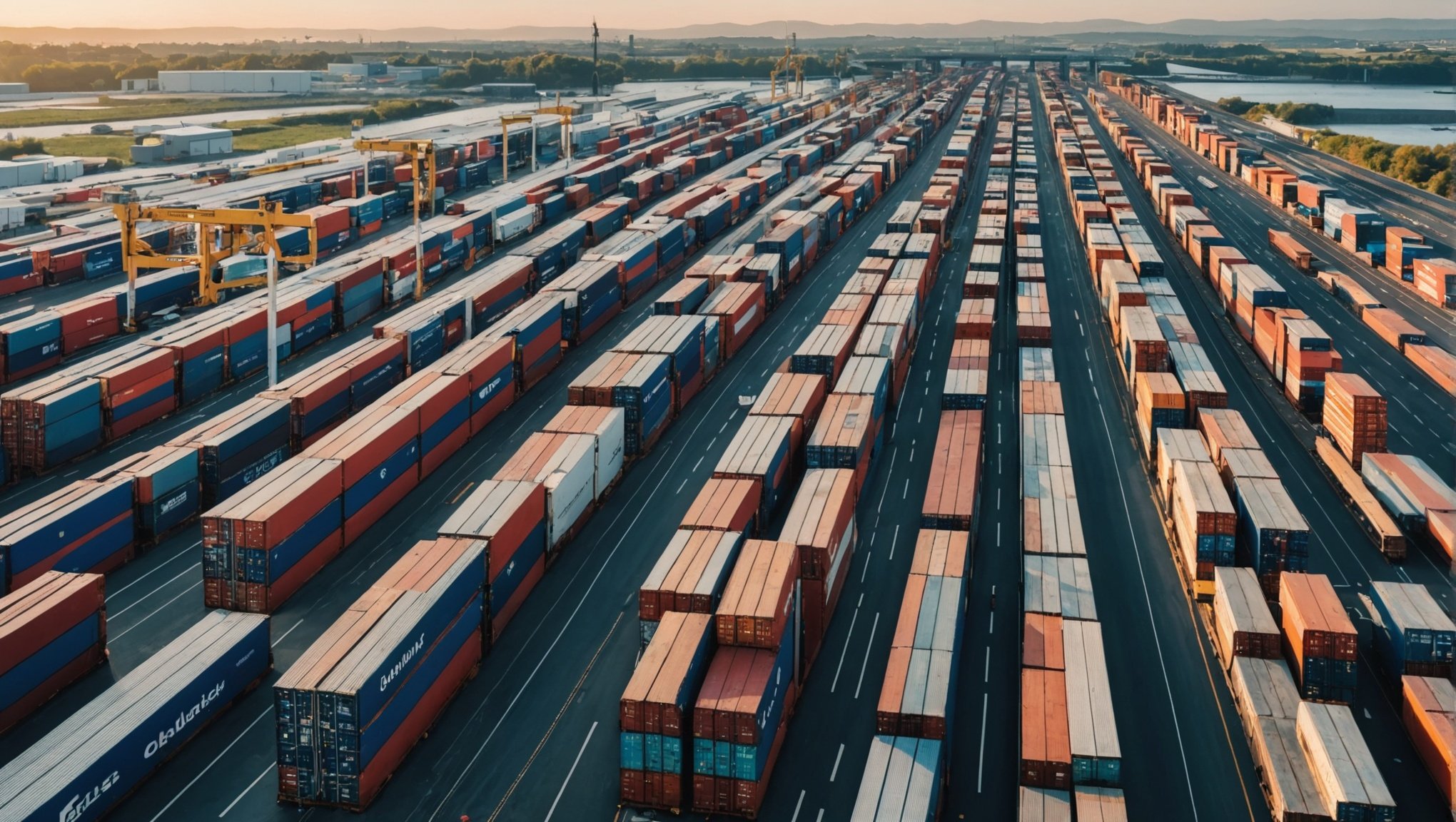Understanding Data Analytics in Logistics and Supply Chain Management
In recent years, data analytics has become crucial in revolutionising logistics and supply chain management. At its core, data analytics involves examining raw data to make informed decisions, leading to efficiency and optimisation. In logistics, this means smarter supply chain management—from predicting demands to ensuring timely delivery, which enhances operational success.
Key Components of Supply Chain Management
Supply chain management encompasses various key components, including procurement, production, transportation, warehousing, and inventory control. Each component can benefit from data analytics, providing insights into trends, performance, and potential areas for improvement. By integrating data analytics, organisations can anticipate challenges and create strategies that enhance efficiency and reduce costs.
Topic to read : Unlocking Efficiency: Leveraging Predictive Analytics to Optimize Supply Chain Management in UK FMCG Firms
Evolution of Data Analytics in the UK Logistics Sector
The UK’s logistics sector has witnessed a significant transformation with the advent of data analytics. Traditionally reliant on manual processes, the sector is now leveraging advanced analytics solutions to streamline supply chain management processes. This evolution has paved the way for predictive analytics, allowing companies to foresee market demands and trends with greater precision. The shift towards a more analytical approach has also encouraged the adoption of technology-driven strategies, fostering greater competition and innovation within the UK market.
Importance of Data-Driven Decision Making
In the realm of logistics operations, embracing a data-driven approach is no longer optional. It’s a crucial strategic move that promises efficiency improvement and innovation. By analysing large datasets, companies can predict demand fluctuations, optimise routes, and better allocate resources, ultimately reducing costs and improving service levels.
Also to read : Leveraging Machine Learning for Insightful Sentiment Analysis in UK Public Opinion Research
Data-driven decision making ensures that decisions are based on facts and insights rather than intuition. This shift allows for more accurate forecasting and responsive planning, especially critical in managing supply chains and inventory levels. For instance, by leveraging data analytics, logistics firms in the UK have significantly reduced delivery times and increased customer satisfaction rates.
Consider the case of a leading UK retailer, which successfully implemented data analytics in its delivery operations. The company integrated real-time data from various sources, allowing it to better understand traffic patterns and predict delivery times with greater accuracy. As a result, it achieved a remarkable reduction in delivery delays and optimised its fleet utilisation.
The transformation of decision-making processes through data-driven analytics fosters innovation and competitiveness. By relying on empirical evidence and advanced algorithms, businesses can refine their strategies, making them more resilient and adaptive to market changes.
Key Data Analytics Tools and Techniques
Exploring the landscape of data analytics tools and techniques is crucial for enhancing productivity within the UK logistics sector. Understanding each tool’s capabilities can help tailor solutions to specific needs.
Overview of Popular Data Analytics Tools
Several industry-standard tools are designed to manage and interpret expansive data sets crucial for logistics. Software like Tableau and Power BI provide intuitive platforms for visualising data, allowing for quick insights. These tools facilitate the creation of interactive graphs and dashboards, making them indispensable for logistics managers aiming to optimise routes and reduce costs.
Techniques for Data Collection and Analysis
Data collection within logistics requires precision and adaptability. Techniques such as automated data logging and real-time GPS tracking provide comprehensive datasets necessary for analysis. Utilising AI and machine learning algorithms enables the processing of this data, identifying trends, and predicting outcomes, which is pivotal for forecasting stock levels or tracking shipments.
Best Practices for Implementing Analytics Tools
Implementing these tools effectively involves understanding system integration processes. Begin by identifying key areas of application within logistics operations. Ensure that your team is adept with data management skills, and adopt a phased approach to integration. Regular training and performance monitoring will aid in maintaining accuracy and efficiency.
Real-World Applications of Data Analytics
In the dynamic landscape of the UK supply chain, several companies are harnessing the power of data analytics to revolutionize logistics. These applications involve a multitude of processes, focusing on enhancing operational efficiency and delivering greater value to stakeholders. Notably, firms like Tesco implement data-driven strategies to adeptly manage inventory, reduce waste, and streamline distribution networks.
Case studies provide compelling insights into these practices. For instance, Ocado, an online grocery retailer, leverages predictive analytics to optimise stock levels and anticipate consumer demand. This not only curtails operational costs but also enhances customer satisfaction by ensuring product availability.
These techniques significantly improve real-time data utility, facilitating informed decision-making. By integrating advanced analytics into their systems, companies can swiftly adjust to market fluctuations, thereby maintaining a competitive edge.
However, challenges in logistics persist, often addressed through targeted analytics solutions. These might include enhancing route optimization, minimizing downtime, and forecasting market trends. By tackling such specific hurdles, businesses are able to elevate their supply chain performance, achieving a more resilient and responsive operation.
Thus, the real-world applications of data analytics in logistics offer a holistic approach to improving supply chain management, showcasing the potential of data-driven decision-making in the industry.
Metrics for Measuring Efficiency Improvements
Improving logistics efficiency is crucial for optimising resources and enhancing productivity. Firstly, understanding the right efficiency metrics is key to facilitating effective performance assessment. These metrics often encompass Key Performance Indicators (KPIs) that address areas such as delivery times, inventory levels, and transportation costs.
Identifying Relevant KPIs for Logistics
Selecting the appropriate KPIs in logistics involves evaluating various operational aspects. Key metrics might include:
- On-time delivery rates
- Inventory turnover ratios
- Freight cost per unit
Each KPI is tailored to capture distinct facets of efficiency, allowing for a comprehensive evaluation of logistics performance.
Tools for Tracking Performance Metrics
Several tools are available to monitor these crucial metrics effectively. From advanced software solutions to integrated logistics platforms, technology plays a pivotal role in data management, providing real-time insights and analytics. These tools automate data collection, offering dashboards that help track KPIs with ease.
Analyzing and Interpreting Data
Once data is collected, the process of analysing and interpreting it is central to driving continuous improvement. Techniques such as trend analysis and benchmarking allow businesses to highlight areas needing enhancement. By understanding performance patterns, companies can make informed decisions to improve operational efficiency continually.
Challenges in Implementing Data Analytics
Implementing effective data analytics in industries like UK logistics can be fraught with numerous challenges. Data integration is often cited as one of the most common obstacles faced by businesses. This involves merging different data from various sources into a cohesive, usable form. The complexity of this process can vary greatly depending on the data management systems in place. Issues arise when systems are outdated or incompatible, leading to cost and time inefficiencies.
Data accuracy and quality are critical concerns that cannot be overlooked. Poor quality data can lead to incorrect analyses, impacting decision-making and strategic planning. Businesses should focus on establishing robust protocols for data verification and validation to ensure accuracy.
Moreover, addressing implementation challenges requires strategic planning and a shift towards a data-driven culture. Businesses can adopt several strategies to overcome these hurdles:
- Develop a comprehensive data management framework.
- Invest in staff training and continuous education to enhance data literacy.
- Leverage advanced analytics tools tailored to specific industry needs.
By focusing on these strategic elements, UK logistics companies can effectively navigate the complexities of data analytics implementation, ensuring improved efficiency and decision-making capabilities.
Future Trends in Data Analytics for Logistics
Future Trends in logistics analytics are paving the way for a more efficient supply chain. Innovations in this field rely heavily on the integration of emerging technologies. In particular, artificial intelligence (AI) and machine learning are game-changers. These technologies facilitate predictive analysis, identify patterns, and optimize operations.
Emerging Technologies Influencing Logistics Analytics
AI is transforming how data is processed. By using machine learning algorithms, logistics systems can predict demand, route adjustments, and delivery issues with greater precision. Innovations such as the Internet of Things (IoT) enhance this by providing real-time data from connected devices across the logistics network.
Predictions for the Future in the UK
The UK is expected to see substantial growth in logistics analytics. As companies incorporate more technological advances, the focus will be on sustainability and efficiency. Future trends indicate a shift towards green logistics—from energy-efficient transportation to reduced waste in supply chains. These changes will likely see more investment in renewable resources and technologies aiming to cut carbon footprints.
Role of AI and Machine Learning
AI and machine learning’s role in logistics optimization cannot be overstated. They not only improve accuracy in planning and execution but also enhance customer experiences by providing timely insights and effective solutions, thus setting the stage for a revolution in logistics analytics.












